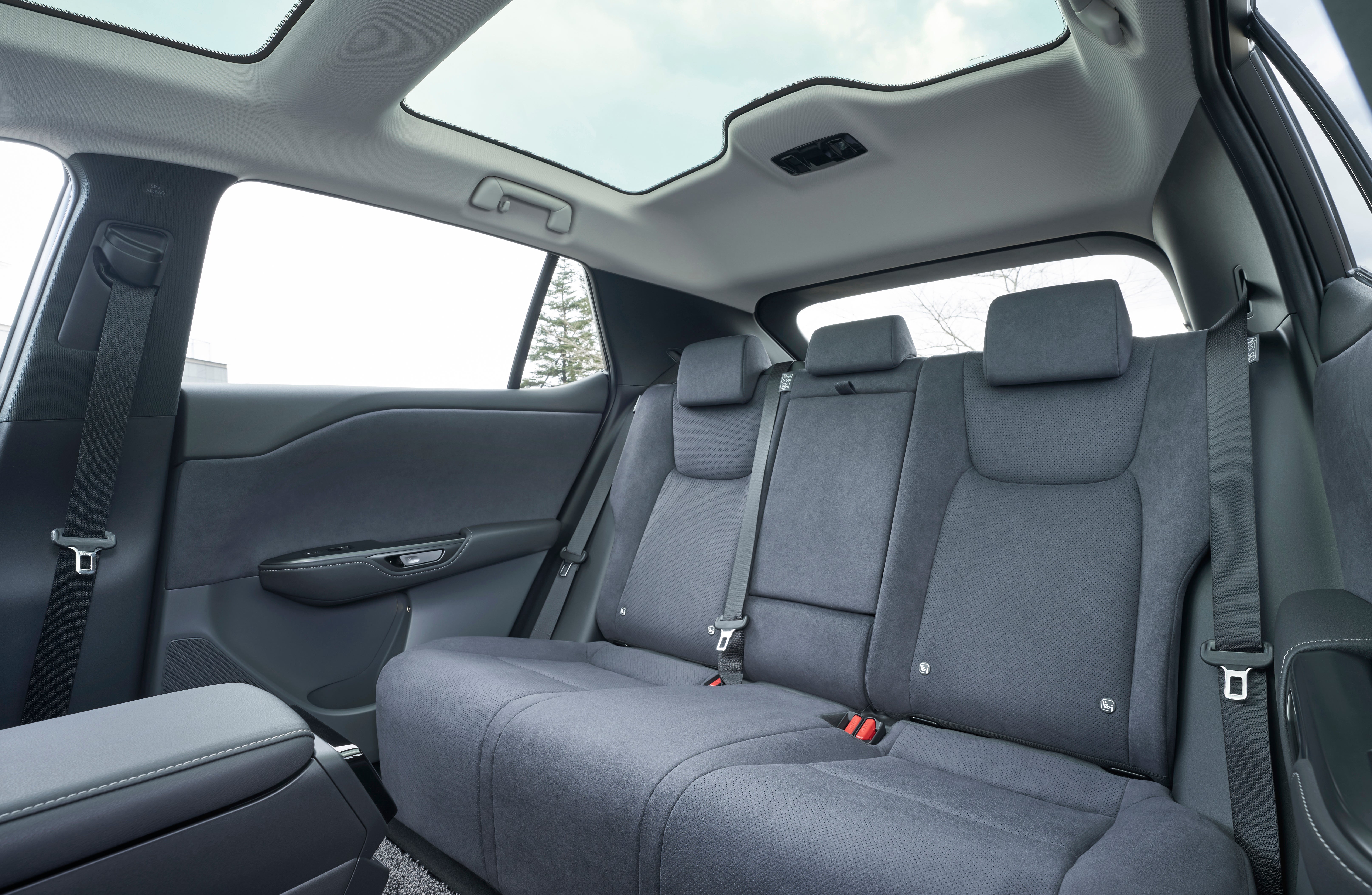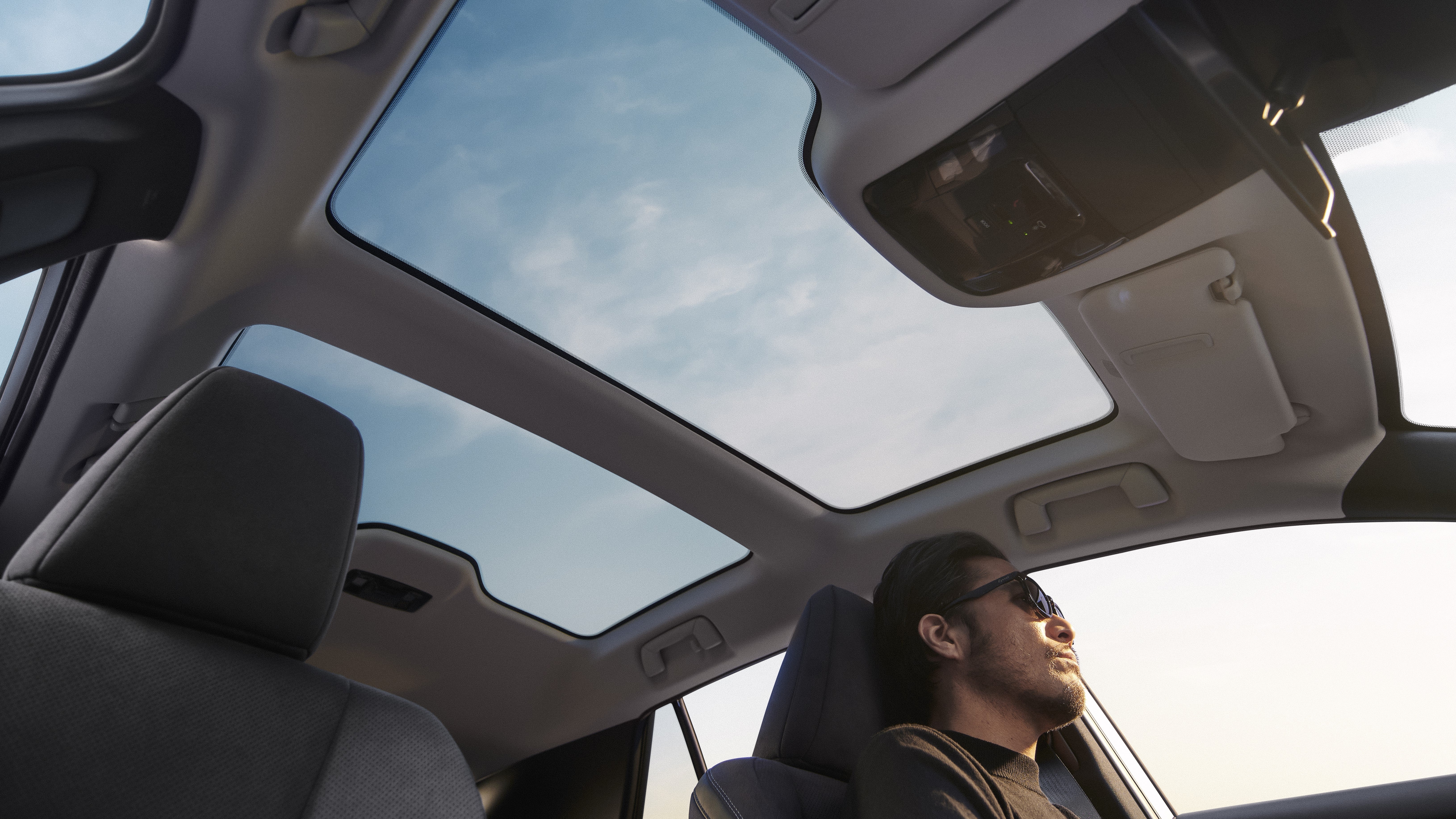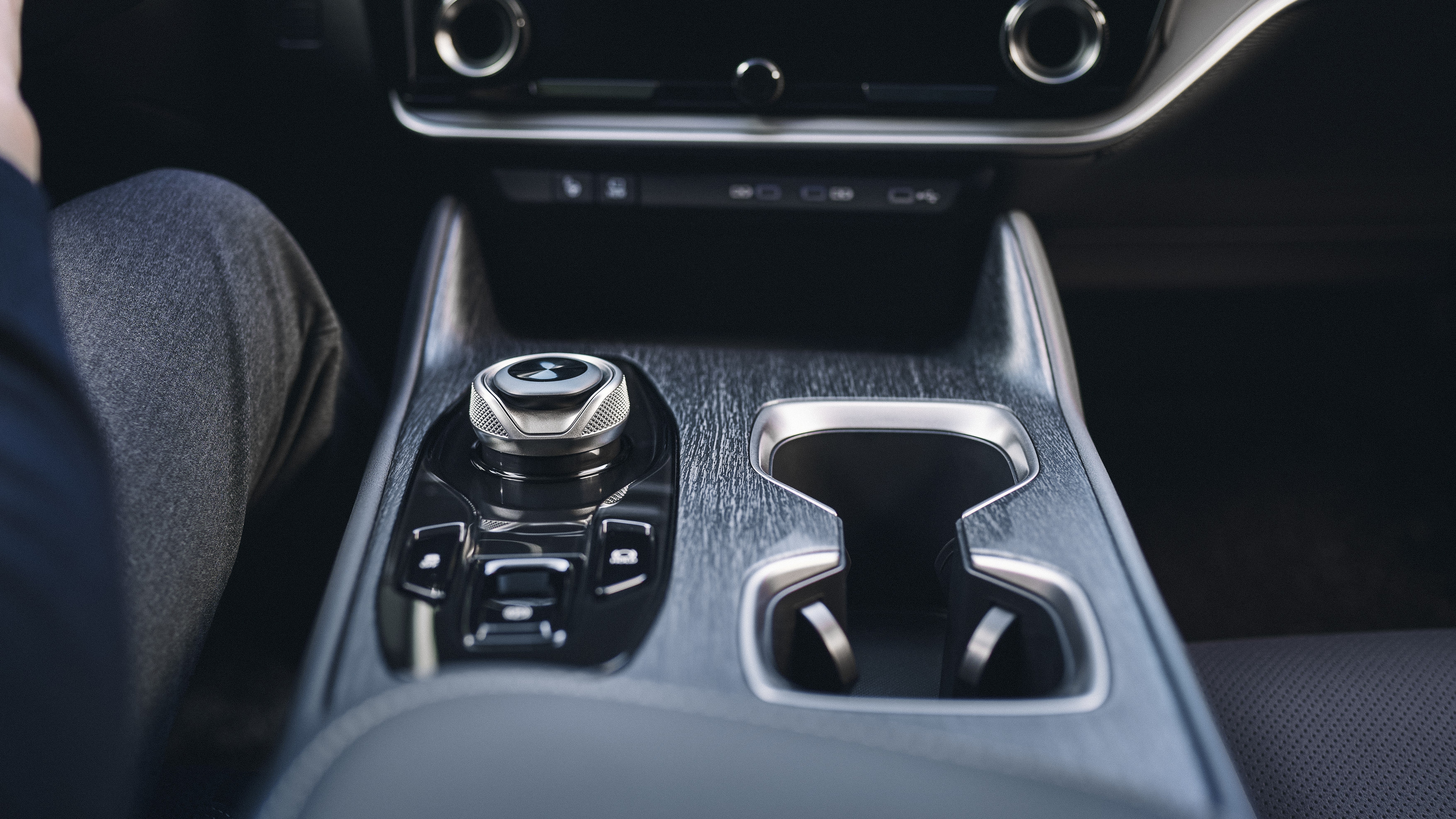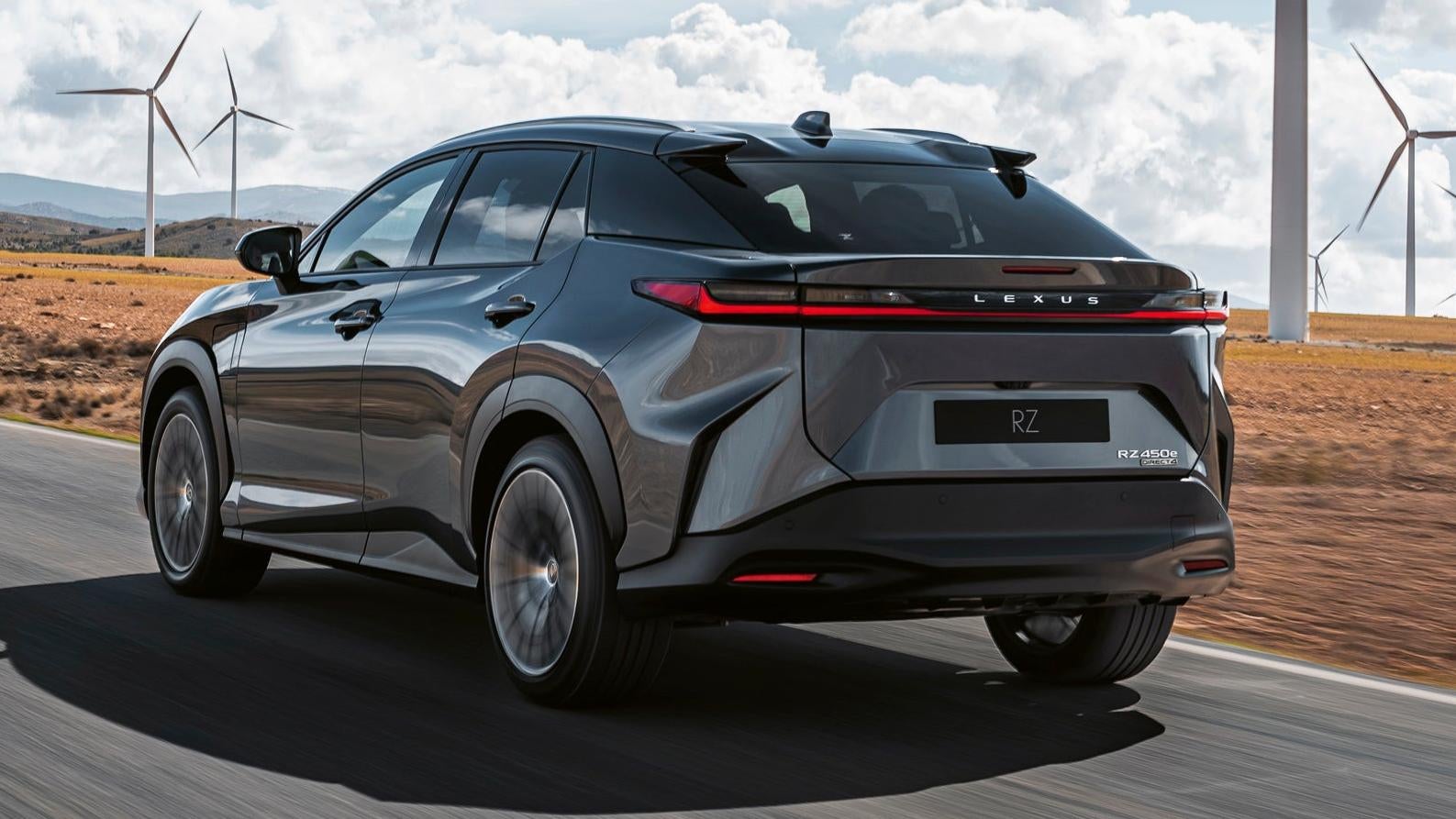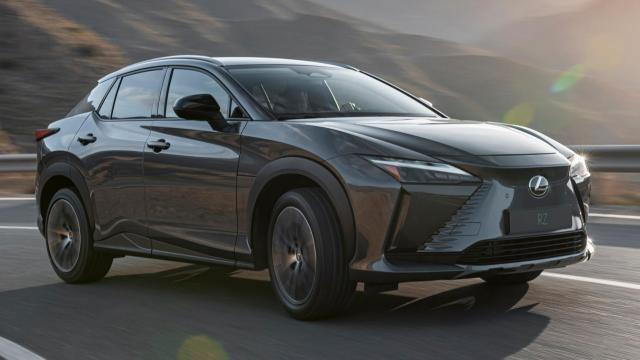Lexus unveiled a new all-electric car on Wednesday, though not its first. The new one is called the RZ 450e, the one possibly with the goddamn yoke. It looks fine, though I think we’re going to have to have a serious discussion in the coming years about grilles on EVs.
But first we must discuss the yoke, which Lexus says will be “available in the U.S. at a future date.” Lexus released pictures of both yoke and non-yoke versions of the car in its announcement.
To wit:

And:
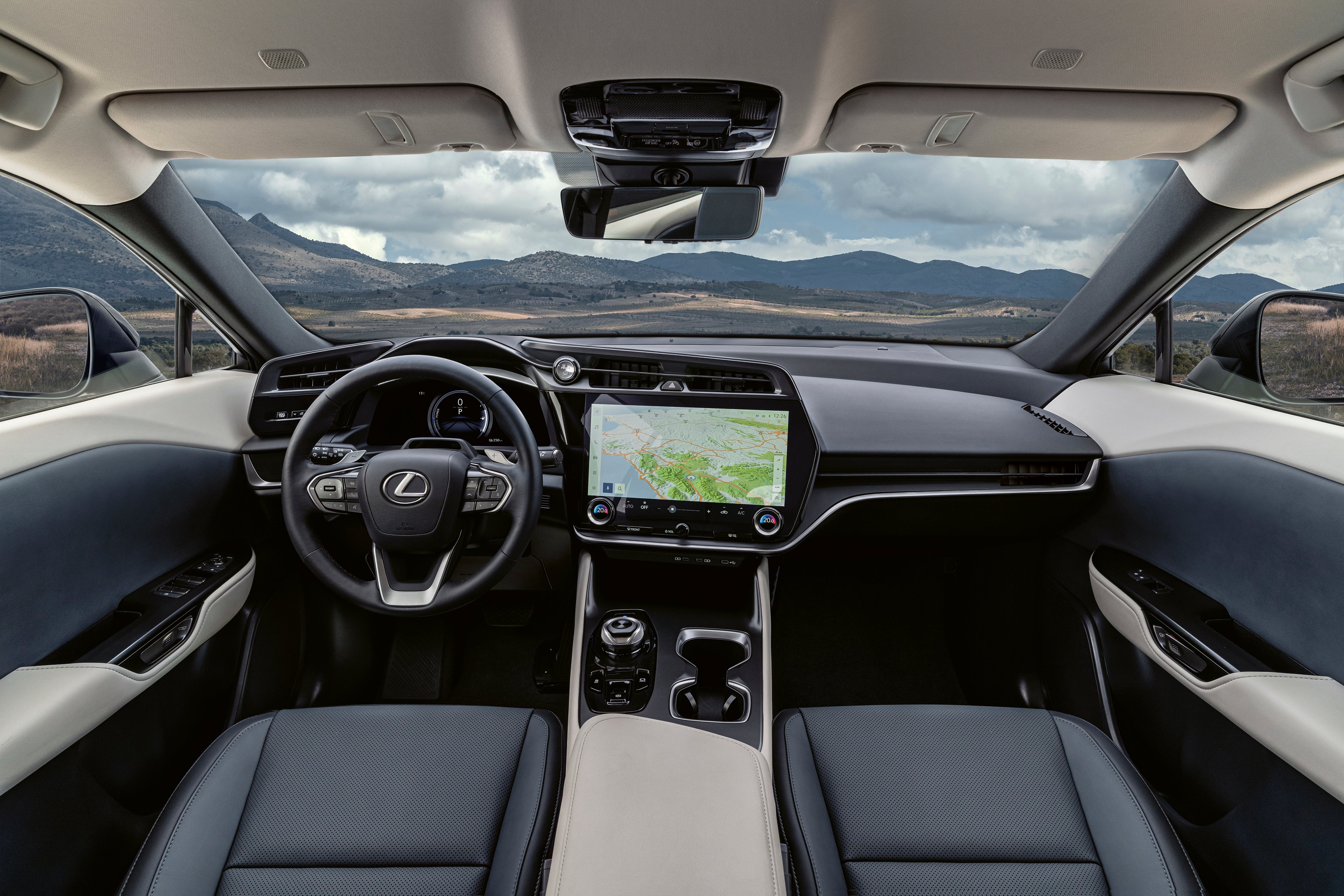
One of those looks like a normal car, and the other one looks like a toy. Anyway, the RZ is expected to go on sale here by the end of the year, sans yoke. Think of it as the luxury version of the Toyota bZ4X. The RZ is quicker, going from zero to 62 mph in 5.4 seconds, according to Auto News. It makes 308 horsepower, compared to the bZ4X’s 214. Its expected range of 362 km, however, is shittier, compared to the bZ4X’s 252.
Lexus wants, in any case, to be an all-EV brand by 2035, in line with other automakers’ expectations. Lexus says it wants the RZ to be a driver’s car, based in part on what sounds like a fairly sophisticated all-wheel-drive system that adjusts power to front and rear wheels based on conditions. From its release:
The DIRECT4 distribution control uses wheel vehicle speed, acceleration and steering angle sensor information to control front-to-rear drive force ratio distribution between 100:0 and 0:100. This contributes to improved start-up acceleration, handling stability and low power consumption. The system uses an approximate front-to-rear drive force ratio distribution between 60:40 and 40:60 to minimise vehicle pitch during launch and straight-line acceleration, thereby achieving a direct acceleration feel. Vital information such as cornering speed and steering angle help to optimise drive force distribution according to various driving conditions and helps attain excellent handling stability. When the steering wheel is turned, drive force is biased to the front wheels (distributing drive force between 75:25 and 50:50) so RZ responds nimbly and provides excellent steering feel. When exiting a corner, torque distribution to the rear wheels is further increased (between 50:50 and 20:80) to ensure ample traction while controlling vehicle pitch. For RZ, engineers have achieved a refined driving feel by orchestrating the seamless operation of their accumulated electrification and dynamic vehicle movement control technologies.
One other interesting potential feature of the car is a steer-by-wire system, also intended to improve driving dynamics. Well, this is how Lexus explains that yoke, anyway:
Available in the U.S. at a future date, the Lexus-first Steer by Wire system enables the electronic exchange of steering and road surface information between the advanced steering control and tires via electrical signals, not mechanical linkage.
The control’s steering angle is set at approximately 150 degrees, thus greatly reducing the driver’s workload and eliminating the need for hand-over-hand operation at intersections, U-turns, parking, winding roads and other driving situations. Unhindered by a sizeable standard steering wheel, designers crafted the steering control’s compact shape and lowered the instrument metre’s placement to encourage driver engagement and environmental awareness.
A cockpit space encouraging even more engagement with the car has been achieved by minimising driver eye movement during driving and naturally drawing the driver’s eyes forward. With Steer by Wire enabling the electronic exchange of steering and road surface information between the steering wheel and tires via electrical signals, Lexus focused on the quality and transmission speed of important driving information. The system achieves manoeuvrable and confidence inspiring performance through precise judgment, by blocking out unnecessary vibrations from the tires and brakes, only relaying vital driving information such as road information to the driver.
I will only note that Tesla has a yoke on some Model Ss with (apparently) the idea that drivers will be using it less and handing more control over to Tesla’s driving assistance features, while Lexus is saying that their yoke is actually intended to make human driving better. I fear both are bad.
Lexus did not release pricing information, but I would expect the RZ to start in the $US50,000 ($69,410) to $US60,000 ($83,292) bracket, same, more or less, as the Tesla Model Y. Which is all well and good, but let me know when Lexus makes the BEV Sport, which looks actually desirable and is the rightful heir to the LFA, one of the greatest cars ever made. Then we’ll have something to talk about.
